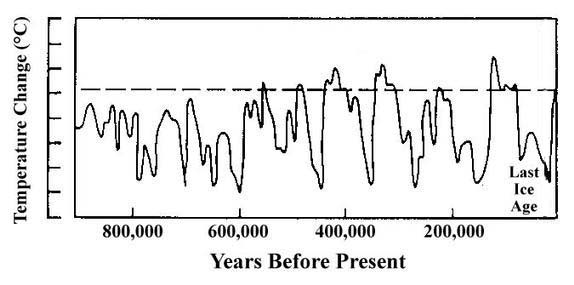From what I've read, it didn't actually hit because there's no sign of a direct impact, but was a very close encounter. It was supposed to have been extraterrestrial because the nanodiamonds found there could have been formed only through the extreme temperatures and pressures in something like an asteroid or comet impact. But the nanodiamond formation could just as likely have been the result of a long-lived, high-powered, auroral event with heavy arcing that occurred around that time. There exists considerable archeological evidence worldwide of this event.
In the illustration below, are you saying that the initial warm-up and, therefore, beginning of the current interglacial, is that little rise in temperature right above the "st" in "Last" and not the large increase after that?
